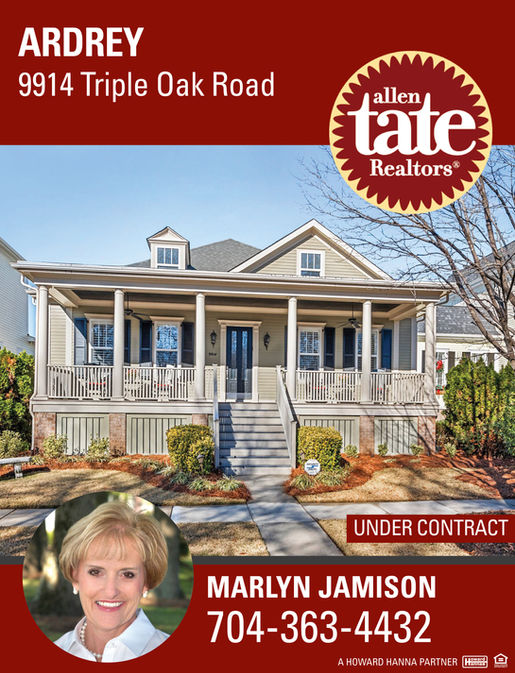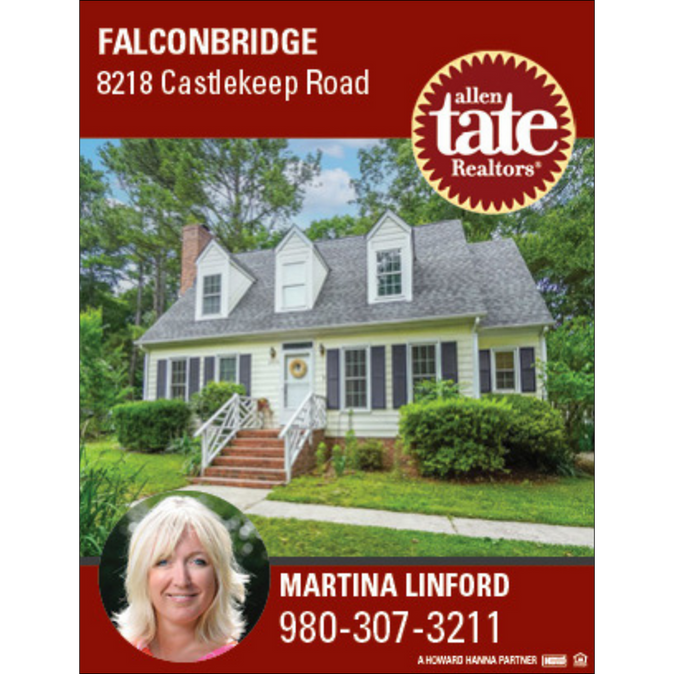Allen Tate —
Digital Billboards
Coordination, Listing Selection, Asset Sourcing, Billboard Design
Role: Lead Graphic Designer | Year: 2023-2024

Overview
The Allen Tate Digital Billboard campaign aimed to showcase top-tier listings and promote local brand awareness across the company’s multi-state footprint. As the lead designer, I developed and managed digital billboard creative that remained visually consistent across diverse markets. In addition to design, I contributed to coordination efforts, selecting featured listings and organizing asset libraries to streamline delivery and deployment.
Objectives:
To create an adaptable, branded visual system that:
-
Promote high-impact property listings in strategic local markets
-
Reinforce Allen Tate’s brand presence across a wide regional footprint
-
Create billboard designs that are instantly readable and visually compelling
-
Develop a scalable system for delivering consistent, on-brand billboard designs across multiple locations
-
Collaborate with internal teams to select listings and manage visual asset organization
-
Support listing agents with premium property exposure through out-of-home advertising

Research & Strategy
This campaign was not just about aesthetics—it was about message efficiency and scalability. Key strategies included:
-
Localized Listing Curation
Worked with team members to select listings based on market activity, property appeal, and visual viability. Properties were chosen to resonate with the surrounding area's target audience and to reflect Allen Tate’s standards of quality.
-
Quick Communication Design
Ensured that billboards were readable in 3–5 seconds. Strong, brief messaging paired with bold typography and clean layout helped maximize retention for drivers and passersby.
-
Scalable Systems for High Volume
Built modular templates that allowed quick updates across locations without sacrificing design consistency. This reduced turnaround time while maintaining quality across dozens of billboards.
-
Efficient Coordination Tools
Created and maintained internal spreadsheets that tracked every asset—from listing approval to file delivery ensuring alignment between agents, designers, and vendors.
-
Seasonal & Event Flexibility
Developed alternate versions for seasonal pushes (like spring/summer market) and timely campaigns (such as event tie-ins or local promotions).

Target Audience & Personas
The success of billboard marketing hinges on capturing attention quickly and delivering a message that speaks to the audience’s needs. Understanding the different demographics across Allen Tate's footprint helped tailor each billboard's focus. A luxury listing in Charlotte required a different approach than a first-time buyer’s property in the Triangle. By aligning visuals and messaging with localized audience needs, we created materials that were both visually strong and strategically relevant.

1. Urban Professionals
Demographic: Age 28-35, Young professionals working in city settings Interested in modern, luxury condos or townhomes in city centers
Needs: Clear messaging, straightforward branding, connection to digital assets
Design Consideration: Responds best to sleek, minimal design and clear pricing

2. Relocating Buyers
Demographic: Age 40-60, Often moving for work, retirement, or lifestyle change
Needs: Clarity, consistency, and trust at every step
of the experience
Design Consideration: Value trusted branding, professional presentation, and location clarity
1. Conceptualization
The initial phase of the digital billboard campaign involved a collaborative effort with the Allen Tate marketing team. The primary objective was to establish a clear understanding of the campaign's overarching goals and its intended footprint. This included:
-
Understanding Campaign Goals: Aligning with the marketing team to define the specific objectives of the digital billboard campaign. This involved identifying key performance indicators (KPIs) and desired outcomes, such as increased brand awareness, lead generation, or specific property promotion.
-
Analyzing Available Locations: Reviewing the available digital billboard locations across North and South Carolina. This included assessing the visibility, traffic patterns, and surrounding environment of each location to determine its suitability for the campaign.
-
Understanding Audience Demographics: Researching the demographic profiles of the audiences exposed to each billboard location. This involved gathering data on age, income, occupation, and other relevant factors to tailor the messaging and visuals to resonate with the target audience.
-
Reviewing Current Listing Priorities: Identifying the listings that were prioritized for promotion based on factors such as market demand, price range, and property type. This ensured that the digital billboard campaign aligned with the company's overall sales and marketing objectives.
-
Shaping Campaign Strategy: Developing a comprehensive campaign strategy that emphasized clarity, speed of communication, and regional relevance. This involved defining the key messages, visual elements, and overall tone of the campaign to effectively capture the attention of the target audience.
-
Analyzing Visual Performance: Analyzing which types of listings performed best visually at billboard scale. This involved reviewing past campaigns and identifying the visual elements that were most effective in attracting attention and generating interest.
-
Identifying Messaging Opportunities: Identifying key messaging opportunities based on market trends, seasonal events, and local community interests. This ensured that the campaign was timely, relevant, and engaging for the target audience.
This initial conceptualization phase was crucial for laying the foundation for a successful digital billboard campaign. By aligning with the marketing team, analyzing available data, and identifying key messaging opportunities, we were able to develop a campaign strategy that was both effective and efficient.

2. Asset Planning
Once the campaign goals were clearly defined, the next step involved collaborating with internal teams to select the listings that were best suited for large-scale display. This process included:
-
Pulling High-Quality Property Images and Agent Headshots: Gathering high-resolution images of the selected properties and professional headshots of the associated agents. This ensured that the visuals were clear, crisp, and visually appealing on the digital billboards.
-
Gathering Listing Details and Pricing: Collecting all relevant listing details, including property descriptions, key features, and pricing information. This ensured that the billboards provided accurate and informative details to potential buyers.
-
Auditing Photos for Lighting, Clarity, and Visual Impact: Reviewing all property images to ensure they met the required standards for lighting, clarity, and visual impact. This involved identifying and addressing any issues with image quality, composition, or overall appeal.
-
Creating a System to Organize Listings: Developing a systematic approach to organize listings by location, timeline, and readiness. This ensured that the assets were easily accessible and could be efficiently managed throughout the campaign.
-
Developing Internal Spreadsheets: Creating internal spreadsheets to track design progress and version control. This facilitated seamless coordination between agents, marketing, and deployment teams, ensuring that everyone was on the same page and that the campaign stayed on schedule.
The asset planning phase was critical for ensuring that the digital billboard campaign was well-organized, efficient, and effective. By carefully selecting and preparing the assets, we were able to create visually compelling billboards that accurately represented the properties and agents involved.

3. Execution
With the listings and messaging in place, the focus shifted to the execution phase, which involved designing and delivering billboard visuals that were brand-aligned, legible, and compelling. Key design decisions focused on maximizing readability in the limited timeframe of 3–5 seconds, using strong contrast, minimal text, and clear visuals.
Assets Designed
-
Digital Billboards for Various Regions: Designing digital billboards for various regions across North and South Carolina, taking into account the unique characteristics and target audiences of each location.
-
Multiple Design Variants: Creating multiple design variants for different listing types, seasonal shifts, and regional preferences. This ensured that the campaign remained fresh, relevant, and engaging throughout its duration.
-
Custom Typography Treatments and Modular Layouts: Developing custom typography treatments and modular layouts to maintain brand consistency across all billboards. This helped to reinforce the Allen Tate brand identity and create a cohesive visual experience.
-
Organized Final Assets: Organizing final assets into folders and delivery spreadsheets for internal and vendor use. This streamlined the deployment process and ensured that the billboards were displayed accurately and efficiently.
The execution phase was crucial for bringing the digital billboard campaign to life. By carefully considering design principles, creating multiple design variants, and organizing the final assets, we were able to deliver a campaign that was both visually appealing and highly effective in reaching the target audience. The focus on readability, brand consistency, and regional relevance ensured that the billboards captured attention, conveyed key messages, and ultimately contributed to the success of the Allen Tate brand.




Outcomes:
-
Delivered dozens of large-scale digital billboards across multiple cities within the Allen Tate footprint
-
Significantly increased visibility for key listings during high-traffic times of year
-
Supported listing agents by giving their properties premium exposure in competitive markets
-
Helped solidify Allen Tate’s image as a tech-forward, visually consistent brand across diverse geographic regions
-
Developed a scalable visual system still in use for future billboard cycles
Reflections:
This campaign was a strong blend of visual design and operational strategy. It challenged me to work at the intersection of brand integrity and efficiency, while staying adaptable to evolving listing needs. Through this project, I gained deeper insight into how to lead scalable design systems and maintain high standards in fast-moving, multi-location marketing environments.



















